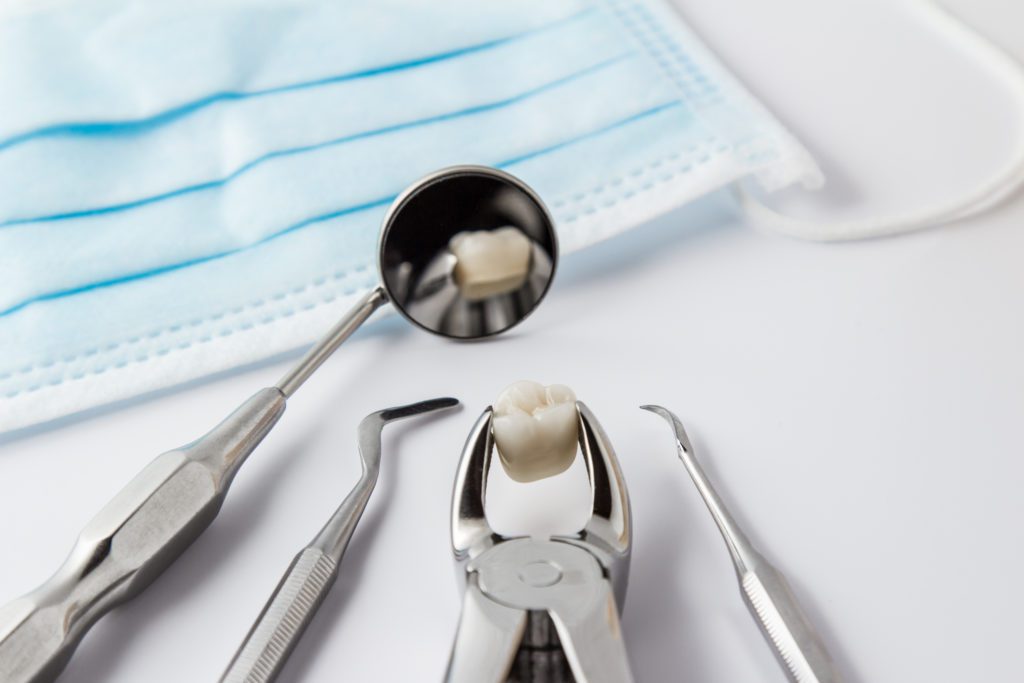Are your wisdom teeth coming in? Do you have multiple infected teeth? You may need a dental extraction. Tooth extractions are general dental treatments that remove problem teeth to restore function and comfort to the smile. We often recommend extractions as a last resort for patients with infected teeth that cannot be preserved with root canal treatment.
Extractions may also remove painful, impacted wisdom teeth. Dr. Jeffrey Bellisario offers tooth extraction treatment to patients in his Ardmore, PA dental office. Here, you can learn more about what happens during extractions and the benefits of this treatment.

Simple and Complex Tooth Extractions
Dental extractions fall into two categories: simple and complex. Simple tooth extractions remove teeth above the gum line. They’re visible, allowing the dentist to access them easily. We usually use a local anesthetic to numb the area around the tooth, minimizing discomfort. The dentist uses a special tool called an elevator to loosen the tooth from its socket before gently removing it with forceps.
Removing Wisdom Teeth
Wisdom teeth, also known as the third molars, are the last teeth to emerge. Most patients will notice their wisdom teeth coming in if they feel pain behind their back molars. At routine dental appointments, we will take digital X-rays to keep track of your wisdom teeth. We will schedule an extraction for you in our office if impaction is possible.
Patients will need their wisdom teeth extracted to prevent impaction. Impacted teeth are teeth that do not have enough room to erupt. As a result, the wisdom teeth can dig into the back molars and overly crowd teeth. Patients often feel tooth pain or sensitivity when their teeth come in. Removing the wisdom teeth can prevent future dental problems.
Do You Need A Tooth Extraction?
Tooth Extraction Aftercare
Taking care of the extraction site after the procedure is essential for healing and avoiding dry socket. We’ll pack gauze into the site and have you bite down on it, stopping blood flow and starting the clotting process. A correct blood clot is necessary for healing properly.
Sometimes, we’ll prescribe pain medication to take during the healing process. Otherwise, you can use over-the-counter painkillers to manage the pain as you’re healing. We also recommend periodically using a cold compress to reduce inflammation and swelling. During the healing process, you’ll need to avoid both smoking and drinking alcohol. Both of these things compromise the healing process and can cause complications.
Wait 24 hours after the extraction to gently brush and floss your teeth. Don’t forcibly spit after brushing your teeth, as this can disrupt the blood clot. After that first 24 hours, begin rinsing your mouth with warm saltwater a few times daily. This keeps the extraction site clean and promotes the healing process.
Stick to a soft diet for the first few days after the procedure. Avoid chewing on the extraction site, and don’t put pressure on it. Avoid foods that are hot or spicy. You should also avoid drinking anything through a straw, which disrupts the blood clot and increases your chances of dry socket.
Schedule an Appointment
Do you have wisdom teeth coming in? Contact Dr. Bellisario for a tooth extraction consultation at (610) 839-8967. You may also request a dental appointment on our website.
